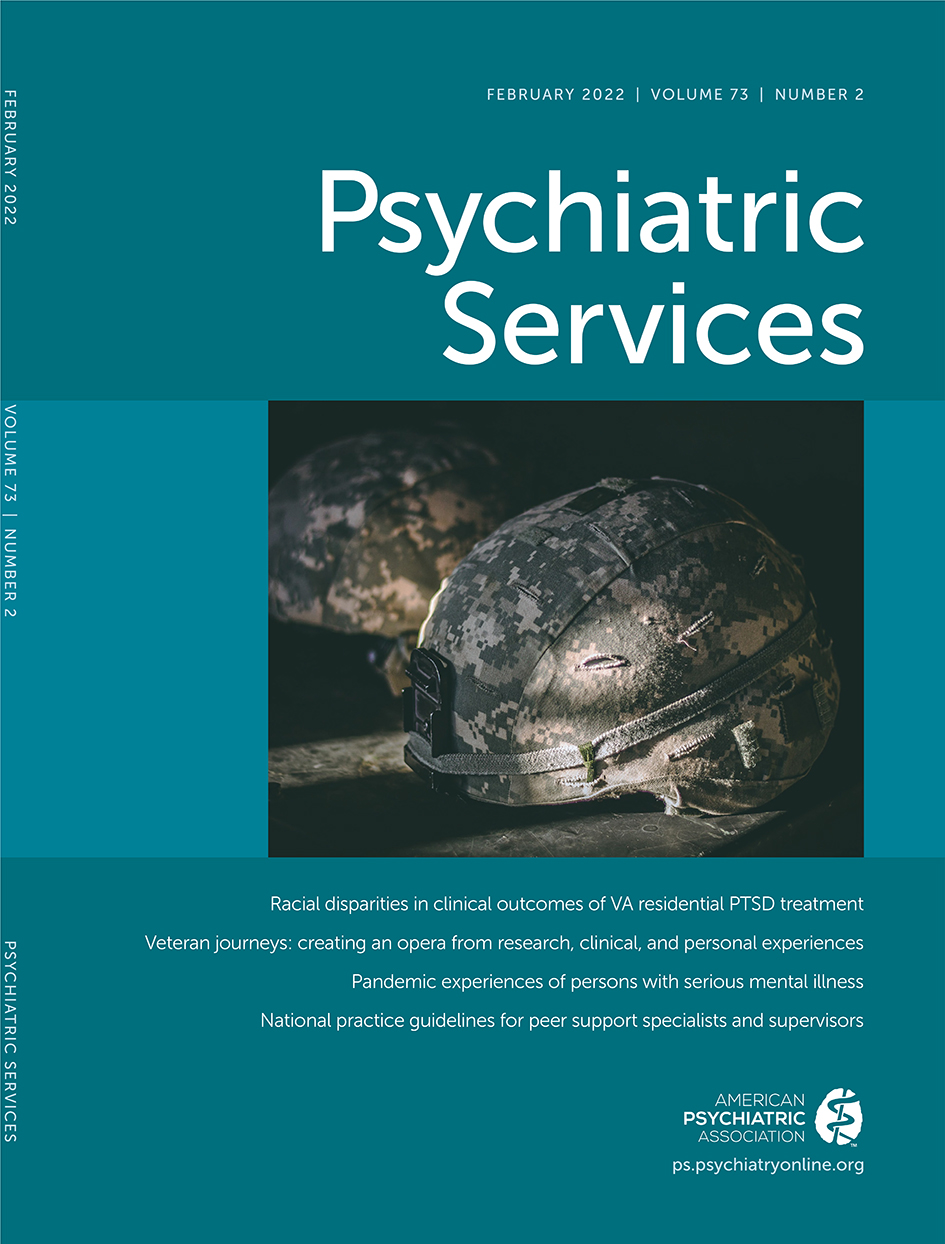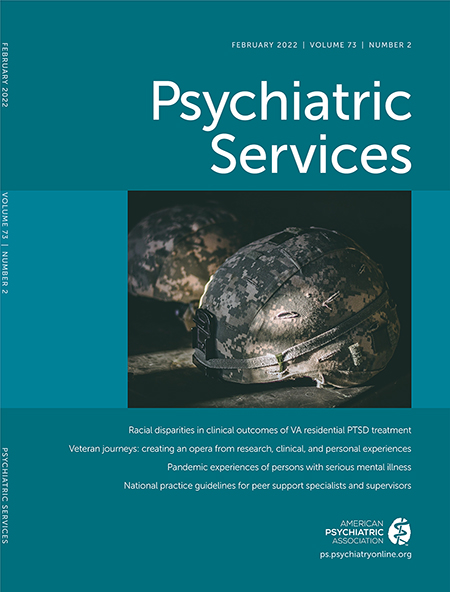As a psychiatrist, researcher, and musician, I found meaning in integrating aspects of my personal experiences through creative outlets, including developing operas on mental health themes. This Open Forum describes the background for my third opera, Veteran Journeys, developed by integrating my research, clinical, and personal experiences.
I grew up in a family that combined science and technology with creative artistic works. My father was an electrical engineer and inventor, who later in life became a stained-glass artist. His brother was an electrical engineer and painter. My grandfather was vice-president of Bell Telephone and choral director for Aimee Semple McPherson at Angelus Temple in downtown Los Angeles. We grew up with the view that it was normal to pursue both science and art projects. I learned how to achieve a balance among these different activities from my mother, who left college when she married my father during World War II, went back to college when I went to medical school, and became a full professor before I did.
Her method for “developing herself” was to spend 20 minutes a day—no more, no less—trying something new. Trying to do more, you get frustrated; doing less, your brain and behavior do not develop (i.e., my interpretation from observing my mother). After following this approach for several weeks, you then can be flexible, including having days with no new activity or working for hours or days on the new activity. That was my strategy for developing an opera as an academic psychiatrist at the University of California, Los Angeles (UCLA), while raising a family—following a childhood dream of writing opera. Through medical school and beyond, I was active in singing, choral directing, composing, and learning new instruments to write for orchestra.
As a clinician, it was meaningful for me to learn the experiences of patients and as a researcher, to study how to improve patient outcomes—whether describing the quality and outcomes of primary care for depression in a medical outcomes study (
1), identifying the effectiveness of collaborative care for depression relative to enhanced usual care in Partners in Care (
2), or evaluating a community-wide approach to collaborative care in Community Partners in Care (
3). As I was learning to use the community-partnered participatory research model (
4) with Healthy African American Families II in the Witness for Wellness project, a call came out from the community to use arts to address mental health stigma. This request was realized in the Talking Wellness work group (
5). This experience increased my commitment to using arts to address mental health stigma and to developing a program dedicated to this goal (called Media and Medicine for Communities and then Healing and Education through the Arts, or HEArts) (
6).
As part of this program, I developed my first opera (
The First Lady Opera) on complicated grief based on Eleanor Roosevelt’s experience after the death of her husband, Franklin D. Roosevelt. This project was followed by an opera on recovery from serious mental illness, based on Elyn Saks’ memoir
The Center Cannot Hold; the opera premiered at UCLA with commentaries by the
Washington Post and
JAMA (
7) and was streamed by National Mental Health America and
JAMA. In developing these works, I expanded lived experience of patients with my clinical experience to also capture the perspectives of providers. This expansion reinforced for me the meaning of integrating art with personal and clinical experience, as I had witnessed firsthand growing up.
What to do next? For me, the question was whether there was the possibility of deeper integration of art and opera with science and clinical and personal experiences. This opportunity arose after I became an attending psychiatrist at a homeless clinic run by Homeless Patient Aligned Care Teams (HPACT) at the greater Los Angeles U.S. Department of Veterans Affairs (VA). My experiences as a clinician moved me, as I witnessed journeys of veterans who had served in the U.S. military and now experienced challenges such as posttraumatic stress disorder (PTSD) and homelessness. This observation stimulated me to consider what narratives of veteran experiences might reveal about their clinical and personal journeys and to search through interviews of participants in Partners in Care at 10-year follow-up (
8).
It also brought up childhood memories of growing up with my father, a World War II veteran, and of my mother, who joined him in Hawaii at age 19, including their custom of inviting veterans to join them for summers of swimming, camping, and going to church to support the veterans in their recovery. Could I integrate research interviews of veterans and my personal and clinical experiences into a narrative opera? The first step was obtaining human subjects approval from RAND Corporation and UCLA to review 10-year follow-up deidentified interview notes and recordings from Partners in Care to develop a libretto.
To write this opera, I sought consultation from colleagues and implemented an approach to systematically screen and analyze interviews with veterans and their families by following six steps: review interviewer notes to identify veterans or veteran family members or other participants with similar stories; highlight sections of interviews that shared stories of challenges and recovery with examples; develop summaries of stories and themes; clarify “tone and feeling” by listening to taped recordings; make notes to guide selection of events and examples of coping strategies, conflicts, care received, and resolution and resilience; and cluster themes and stories into gender and ethnicity groupings to create characters. With a few exceptions, the narratives were from veterans or their family members and not from care providers.
In The Center Cannot Hold opera, I had used personal memories of family members to shape provider characters and stories. As an attending psychiatrist, I had reflected on my experience of interacting with veterans growing up, so one character was a “provider like me” shaped by his family experience. In addition, my wife’s mother was a Navy social worker who served families of Navy pilot prisoners of war in Vietnam, an experience that I used to shape a VA social worker character. Because the HPACT homeless clinic is interdisciplinary, as are collaborative care models studied in Partners in Care, it seemed important to depict the experiences of both psychiatrists and social workers. I drafted a storyline and libretto by iteratively listening to interview recordings, reviewing pictures of my family to enrich my memory, and reflecting on my clinical training and experiences. This experience included, for example, training in meditation, which influenced one scene of the psychiatrist using meditation to support recovery from trauma of war for one veteran and his spouse.
For the Veteran Journeys opera, I received a veterans-in-the-arts grant from the California Arts Council with a 1-year time line that was extended to 2 years because of the COVID-19 pandemic. Whereas other operas took me years to write, I wrote this work after the preparatory phase of reviewing interviews in 6–8 months. The final opera included five solo leads (two male veterans, one veteran spouse whose character was based on interviews, and a VA psychiatrist and a VA social worker whose characters were based on my personal, clinical, and family experiences) and a chorus with orchestral and piano accompaniment. I decided to make the music more accessible (i.e., less dissonant than my previous operas) to fit with the recovery theme.
The opera tells the story of a Vietnam veteran whose PTSD is straining his marriage and of how receiving VA care saves his marriage. It also recounts the story of a veteran friend from Vietnam who is homeless and receives support from the VA social worker for temporary housing and help in seeking permanent housing. Finally, the opera relates the experience of the psychiatrist and social worker based on my personal family experience shared above, and the chorus represents the public and veterans, including a women’s therapy group at the VA (a theme that arose from the interviews with female veterans from Partners in Care). The online premiere was coupled with an online academic conference on innovations in addressing homelessness and behavioral health from our UCLA-VA partnership—drawing on my family’s tradition of integrating science and art.
Nearing completion of this work, I asked myself, had I done it right? Before finalizing the libretto, I sought feedback from veterans and providers with RAND Corporation and UCLA and VA approval for human subjects research for gathering input in group discussions. How the feedback and approval helped refine the language (e.g., the sense of “we’re one” for the women’s therapy group) will be discussed in a future formal manuscript led by qualitative researchers. The remaining challenge was developing the production in a COVID-19 context, requiring remote, individual recording with digital synthesis. As of this writing, the virtual production was in the final stages and open to the public (the conference was held May 27, 2021, and the opera premiered June 3 and 6, 2021 [
https://hss.semel.ucla.edu/veteranjourneys]). After the premiere, the opera was available publicly through Vimeo and YouTube (titled, Veteran Journeys Opera) on TV or online devices, through August 31, 2021 (at the above website).
What does this experience mean to me? As a line in the opera says, “Have I done my parents honor? What gift of recovery to veterans here, can I give today?” Using my mother’s 20-minutes-a-day rule, I sought to share my story to encourage others to find a path to integrating clinical, personal, and creative experiences, to share meaningful stories of how people survive and thrive.

